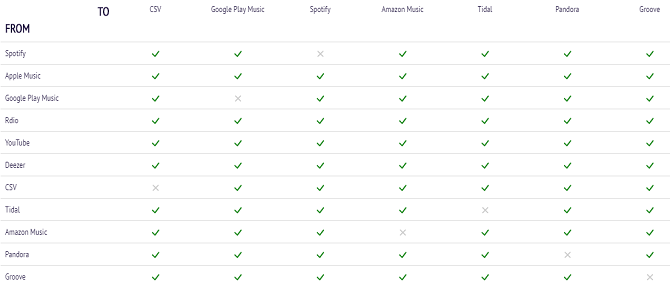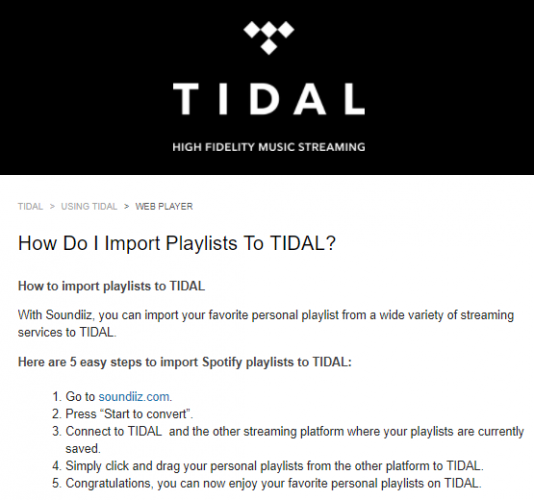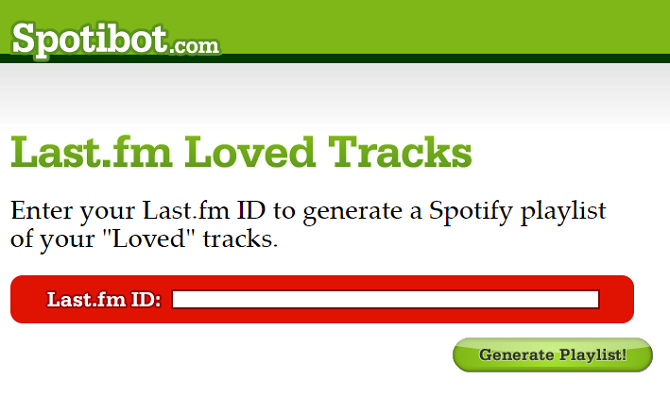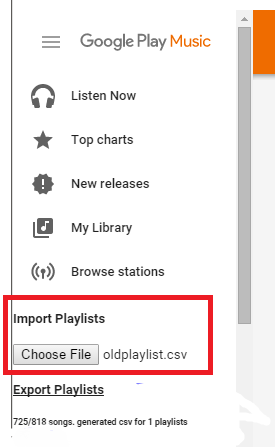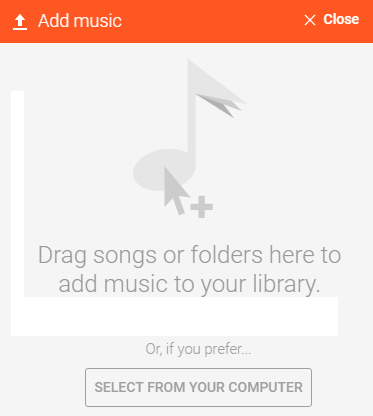Was Spotify's recent web player redesign too much to bear? Have you realized you're not subscribing to the most suitable streaming service for your musical tastes and usage needs? Perhaps it's time to consider switching to a new provider.
Unfortunately, making a switch from one streaming service to another is fraught with difficulties. Are you mentally ready for the switch? How will you move your music libraries? And, perhaps more importantly, how are you going to transfer all those playlists that you invested so much time into creating and curating?
Thankfully, if you use these tools and tricks, you can make your migration a lot easier. Sure, it will still require a bit of work on your part, but if you keep reading this article, you should be up and running in no time.
Transferring Playlists
Playlists are the most valuable part of a music collection for a lot of people. Given the amount of time spent collating them and the number of songs within them, they would be impossible to manually replicate on a new streaming service.
Luckily, there are lots of online tools dedicated to playlist migration. Here are the two best.
1. Stamp
Stamp started life as a tool to let users move playlists from Spotify to Apple Music, but since then it's grown considerably. Now, in addition to the two original services, it also works with Google Play Music, Deezer, Rdio, YouTube, Tidal, Amazon Music, Pandora, and Groove.
Additionally, the app supports CSV files. It's a useful feature if you're planning to cancel all your music streaming subscriptions but want to keep a record of your playlists in case you return to using them one day.
Stamp also helps users who want to sign up to a music streaming service for the first time. Using the free Match tool, the app will scan your locally-saved music library then establish which of Spotify, Google Play Music, or Apple Music has the highest number of matches.
You can download Stamp on Windows, Android, and iOS. The premium version, which removes song and playlist transfer limits per session, costs $9.99 for a lifetime subscription.
2. Soundizz
Soundizz is arguably the most well-known playlist transferring tool. It's so reliable that Tidal suggests using the app on its website.
The app has the largest selection of supported services. Tidal, Spotify, Google Play Music, Apple Music, YouTube, Deezer, Napster, SoundCloud, Groove, Pulselocker, Qobuz, Discogs, Hype Machine, Yandex Music, Dailymotion, and Jamendo are all covered.
Using Soundizz is both easy and fast. Connect the two services you want to transfer playlists between, then simply drag-and-drop the content you want to move.
Like Stamp, there's also a premium version. For $3 per month, you can gain access to playlist management tools, including merging, duplicating, adding songs, editing metadata, and changing the track order. The tool is only available as a web app.
Transferring Your Library
Lots of people use their service's library feature to save music outside of their playlists. Of course, you could move your library into a bumper-sized playlist and use one of the tools above, but some services have track limits and other restrictions.
However, if you're a keen Last.fm user who's been scrobbling your listens for a long time, you have few better methods available to you. Last.fm will already have a comprehensive overview of your favorite artists and bands, so why not use the data to your advantage? Here's how.
1. Spotibot
As the name suggests, Spotibot is focused on users who want to migrate to Spotify. The web app is simple to use. Just enter your Last.fm ID number in the on-screen box, and Spotibot will automatically create a Spotify playlist of all your Loved tracks.
It can also use your Last.fm recommendations to generate playlists, thus making it a fantastic way to find new music. It's the perfect complement to the Spotify Discover Weekly playlist.
2. gmusic-playlist
If you want to switch to Google Play Music, you can move your Last.fm tracks using the third-party gmusic-playlist tool.
To begin, you need to export your Loved songs from Last.fm. Since Last.fm's controversial redesign in 2015, you can no longer export your Loved songs natively. Instead, use this tool on benjaminbenben.com. Just enter your username, and the app will automatically pull the associated data from the Last.fm API as a CSV file.
Next, download gmusic-playlist off GitHub. There is a Python and a JavaScript version. I recommend using the JavaScript version because it adds a CSV file upload option directly into the Google Play Music web app. You just need to select your file and the tool takes care of the rest.
Mental Preparation
Moving between music streaming services raises more issues than merely transferring your music. You also need to prepare mentally. Some of your favorite features might not be available on your new app, some user processes will be different, and all the services will have differing rules and restrictions on your music.
For example, Spotify restricts you to a total library size of 10,000 songs, while each individual playlist is also limited to the same number. It also restricts you to 3,333 offline songs. If you're coming from Google Play Music (which has no limits), these rules can come as a shock.
Similarly, not all services offer a way to upload your own existing music. Google Play Music is the clear winner with its 50,000 song limit, but Apple Music and Spotify both offer loosely similar features. Tidal has no such feature, and nor do other popular apps like Deezer and Pandora.
The list of things that might shock you goes on. There are no music videos on Spotify, there's no native desktop player for Google Play Music, Apple Music lacks social features, and so forth.
Ultimately, if you're a music lover you need to mentally prepare for switching as much as you need to prepare the crucial components. Failure to do so could lead to disappointment and frustration.
How Did You Switch Streaming Music Services?
We've introduced you to two ways to transfer your playlists and two hacks that use Last.fm data as a way to migrate the music you enjoy the most. We have also given you a few hints about mental preparation.
Sadly, these tools are about as good as it gets. The music streaming companies intentionally make it tough for you to switch between services simply because they don't want to lose you as a customer.
If you've switched providers, we would love to hear from you. How did you go about moving all your data and music to your new service? Did you use a specific set of apps and/or tools or did you do it all manually? Perhaps you didn't even bother and just started afresh?


